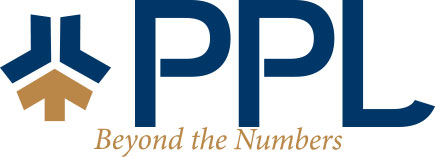Reconstructing records after a disaster may be essential for tax purposes, getting federal assistance or insurance reimbursement. After a disaster, taxpayers might need certain records to prove their loss. The more accurately the loss is estimated, the more loan and grant money there may be available.
For taxpayers who have lost some or all of their records during a disaster, there are some simple steps to take that can help. The following information includes steps to take after a disaster so taxpayers can reconstruct their records and prove loss of personal-use and business property.
Personal Records:
– Take photos or videos as soon as possible after a disaster.
-Contact the title company, escrow company or bank that handled the purchase of your home to get copies of appropriate documents.
-Use current property tax statement for land-versus-building ratios.
-Establish a basis or fair market value of the home by reviewing comparable sales within your neighborhood. You can also check with your mortgage company for copies of appraisals or other information about costs or fair market value in your area.
-Review your insurance policies. Usually, the list value of a building establishes a base figure for replacement value.
-If improvements were made to your home, contact your contractor to see if records are available.
-For inherited property, check court records for probate value. If no records are available check the assessor’s office.
Vehicles
Resources for current fair market value of most cars are available online and at most libraires from the below sources:
-Kelley’s Blue Book
-National Automobile Dealers Association
-Edmunds
Personal Property
Things to consider when cataloguing lost items and their value:
-Look on your mobile device for pictures of your home that might show the damaged property prior to the disaster
-Check websites to establish the cost and fair market value of lost items.
-Support the value of items with photos, videos, cancelled checks, receipts, etc.
-If no photos exists draw the floor plan and sketch pictures of each piece of furniture. Include garage, attic, closets, artwork, etc.
Business Records:
-Create a list of lost inventories by getting copies of invoices from suppliers
– Check mobile devices or other cameras for pictures and videos taken of buildings, equipment and inventory.
-Get copies of bank statements, previous year’s federal & state tax returns. These will reflect gross sales for a given time period.
-If no photos exist draw the floor plan and outline the inside and outside of your business. You can then start to fill in the details of the sketch.
– Remember as a PPL business client your documents are safely stored on our secure portal and accounting software.
If my tax preparer is in a disaster area but I am not, does disaster relief apply to me?
Disaster relief applies to the clients of tax preparers who are unable to file returns or make payments on behalf of the client because of a federally declared disaster. Therefore, if you are a taxpayer outside of the disaster area, you may qualify for relief if:
- Your preparer is in the federally declared disaster area, and the preparer is unable to file or pay on your behalf.
To get the postponement for filing or payment, you must:
- Call the Disaster Hotline at 1-866-562-5227
- Explain your necessary records are located in a covered disaster area
- Provide the FEMA Disaster Number of the county where the affected partnership or S Corp is located
I own an interest in a partnership, or I am a shareholder in a S Corporation, located in a federally declared disaster area but do not live in the disaster area. I do rely on information (Schedule K-1) from the partnership or S Corporation to file my tax return. Do I qualify as an affected taxpayer for purposes of receiving filing and payment relief?
Yes. If the affected partnership or S Corporation cannot provide you the records necessary to file your return, then you are an affected taxpayer. Your filing and payment deadlines are postponed until the end of the postponement period just like the affected partnership or S Corporation.
To get the postponement for filing or payment, you must:
- Call the Disaster Hotline at 1-866-562-5227
- Explain your necessary records are located in a covered disaster area
- Provide the FEMA Disaster Number of the county where the affected partnership or S Corp is located
What address should be used on a taxpayer’s return considering the number of times they may move and may not remain at a current address for a long period of time?
Taxpayers should use their current address when filing. If the taxpayer moves after filing the return, they should update their address with the IRS by calling the IRS Disaster Hotline at 866-562-5227, or by filing Form 8822, Change of AddressPDF.

